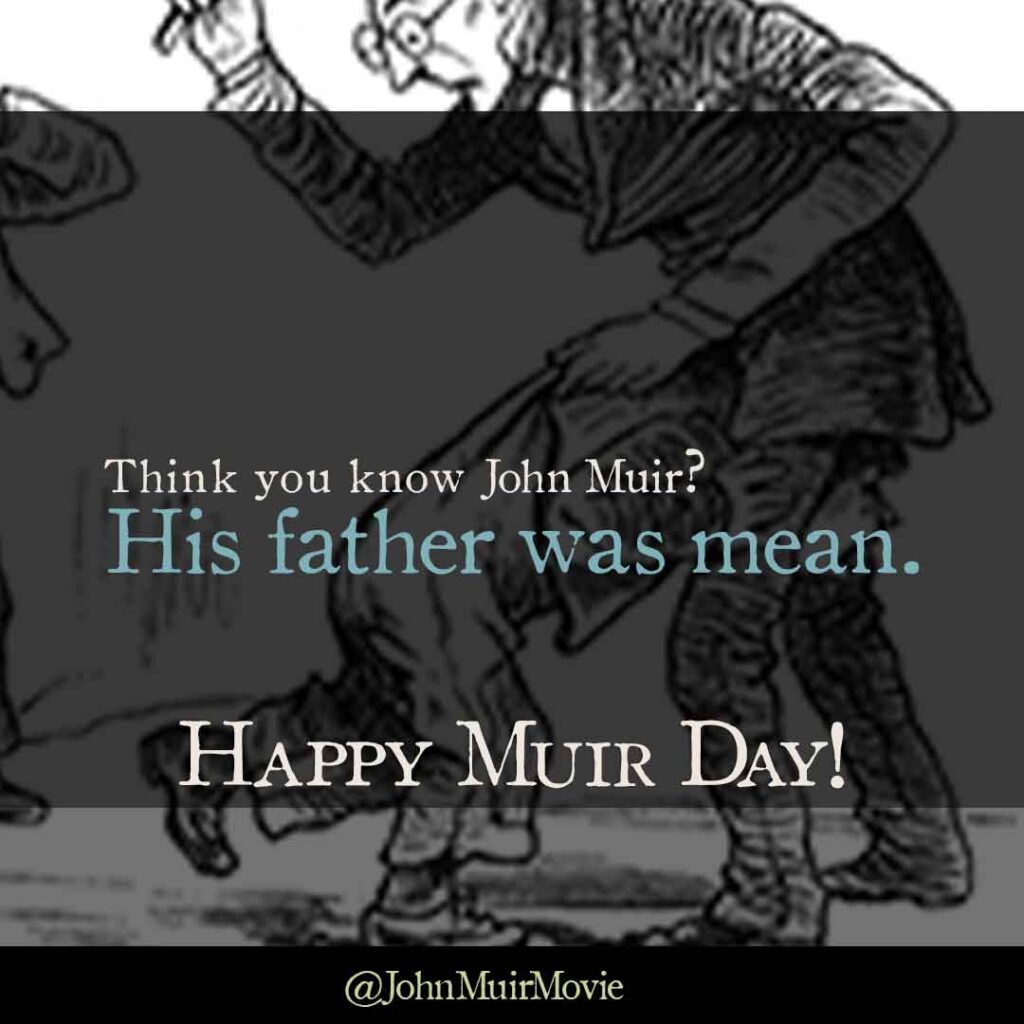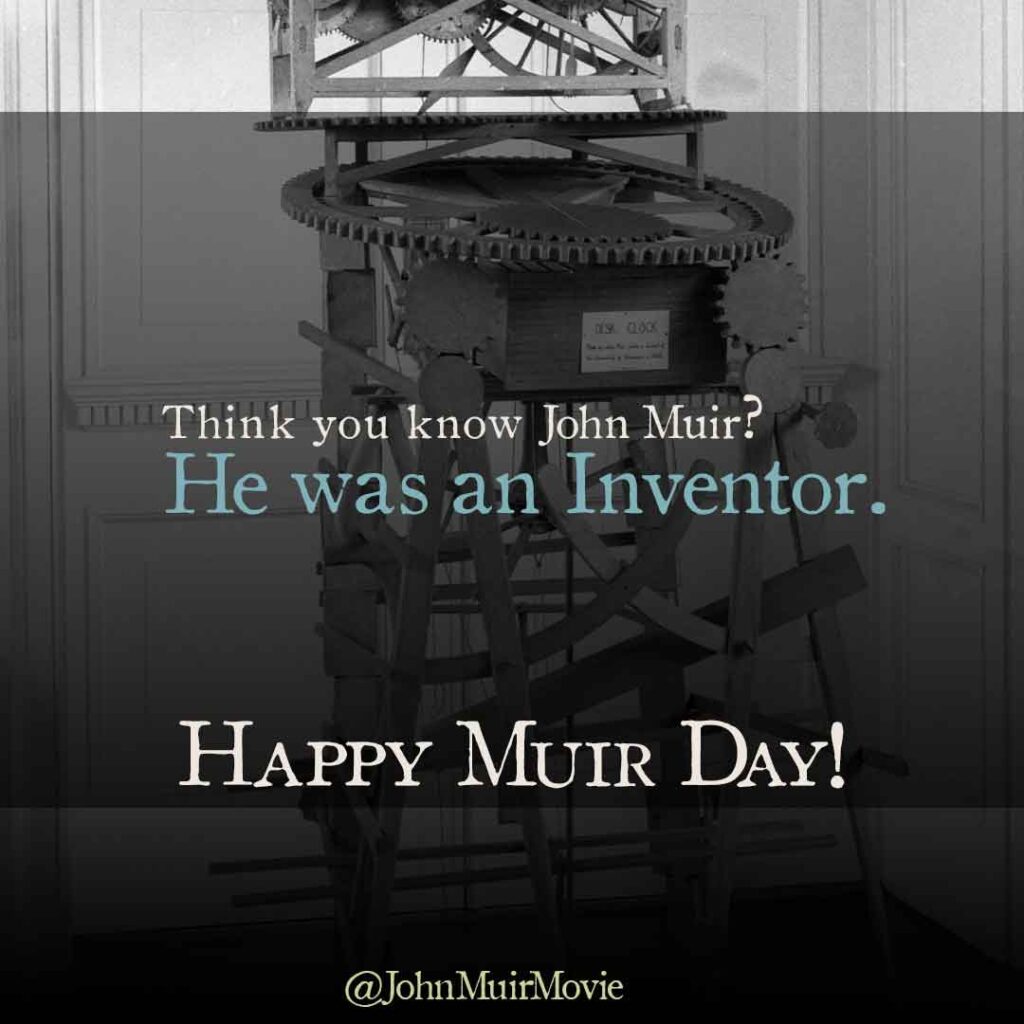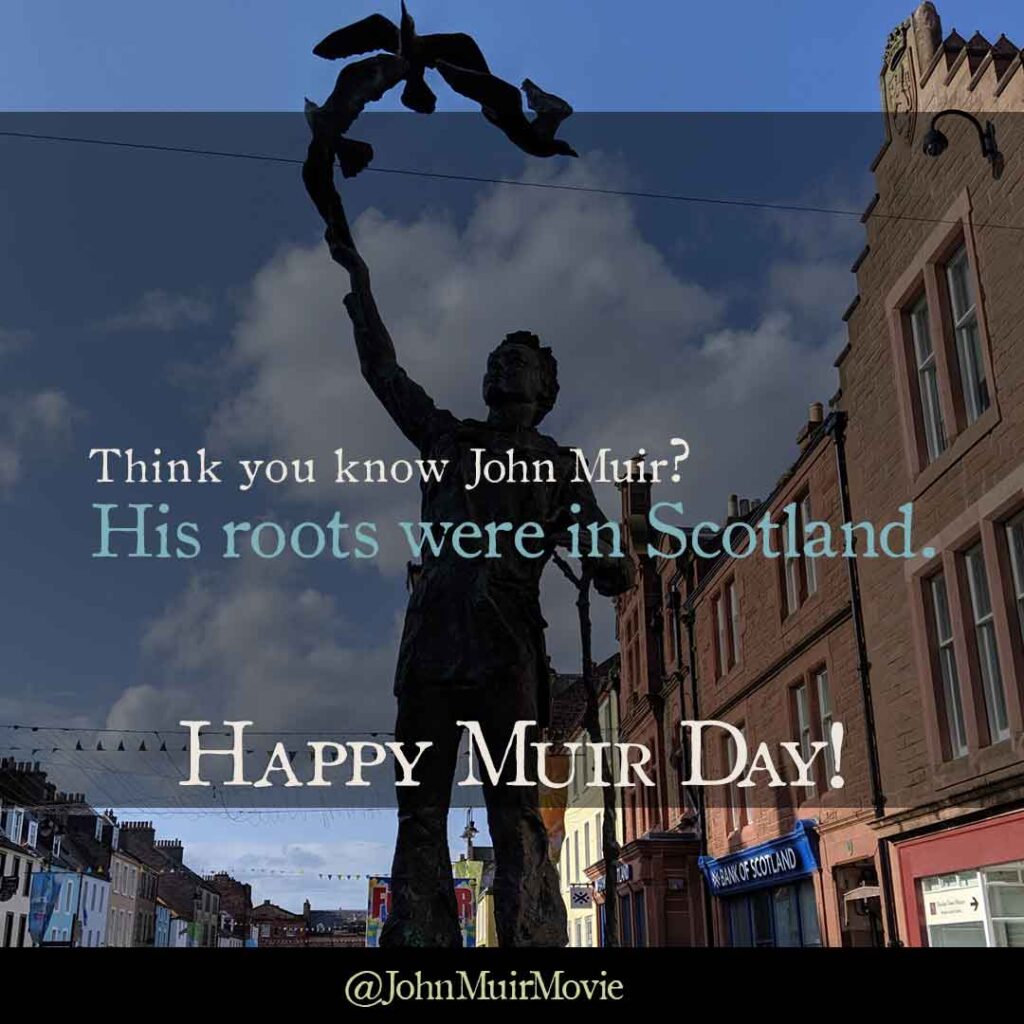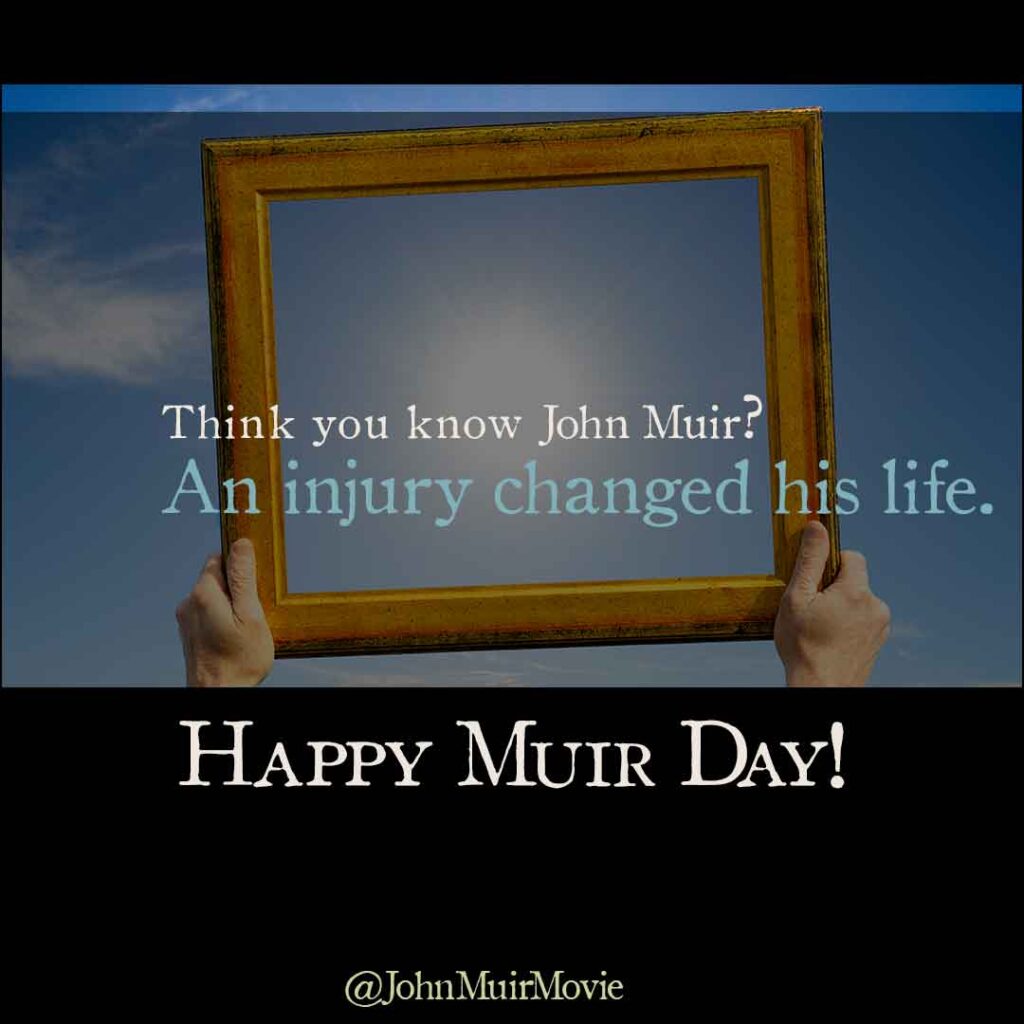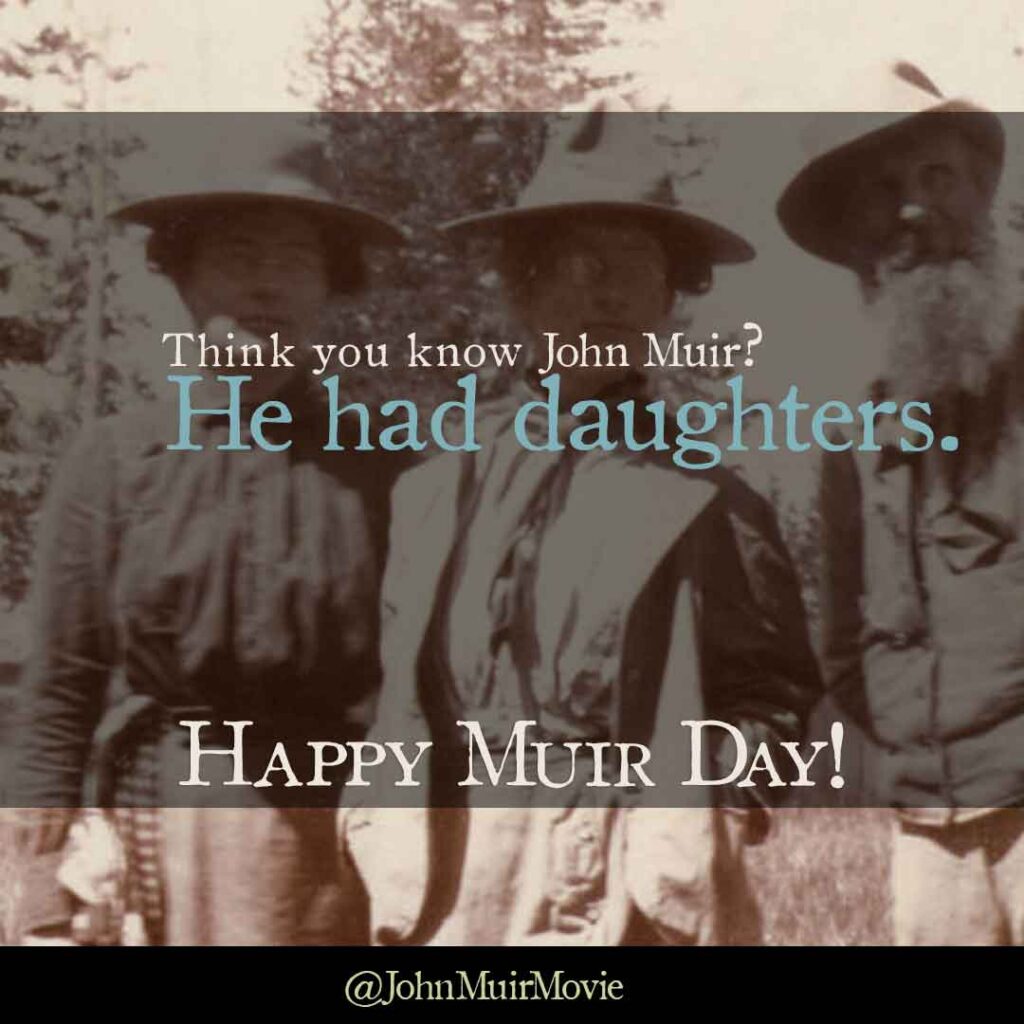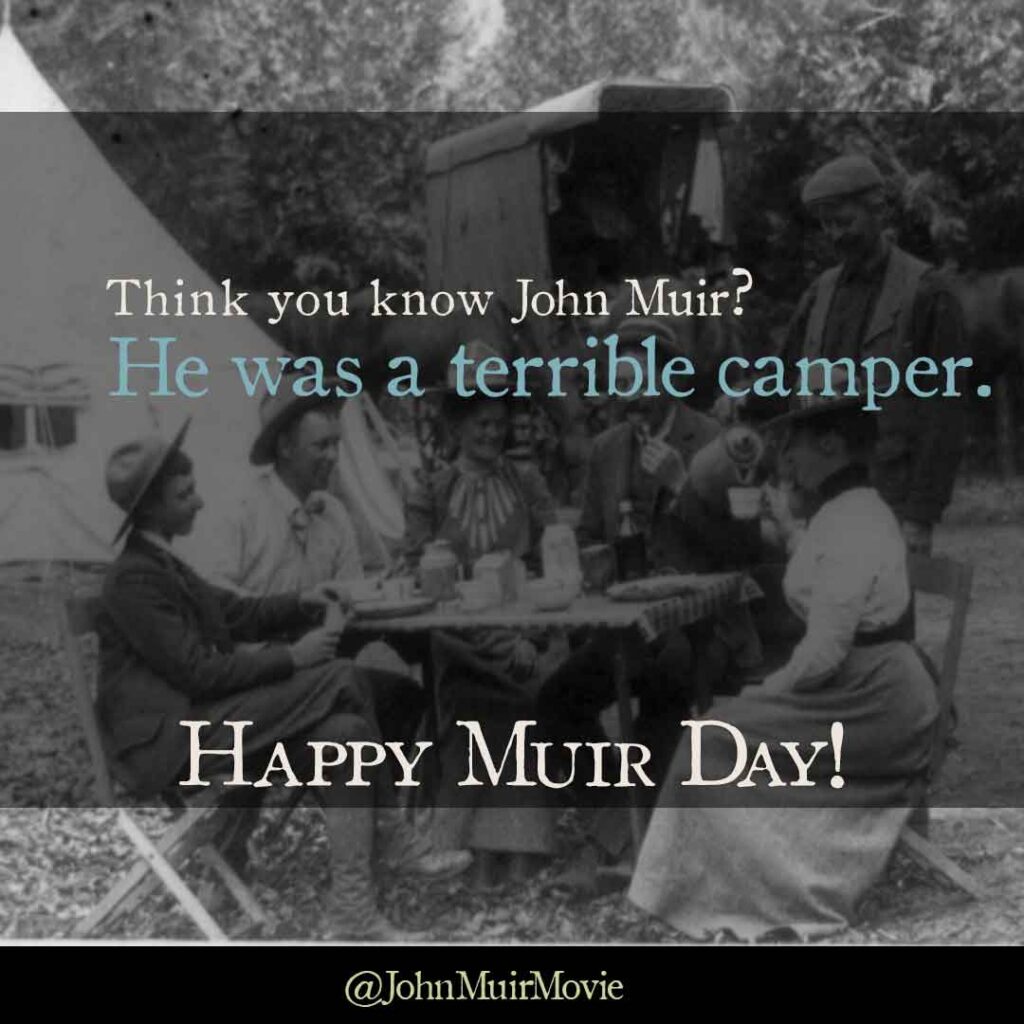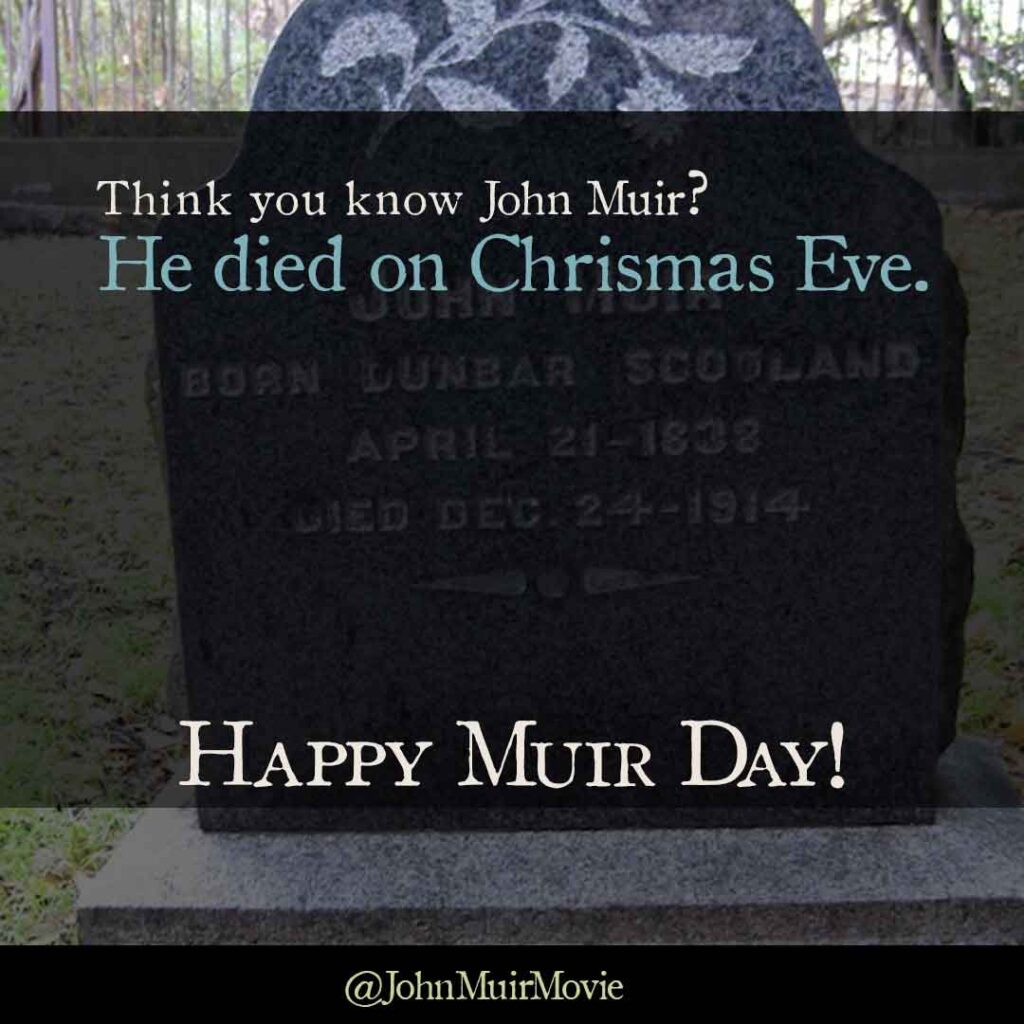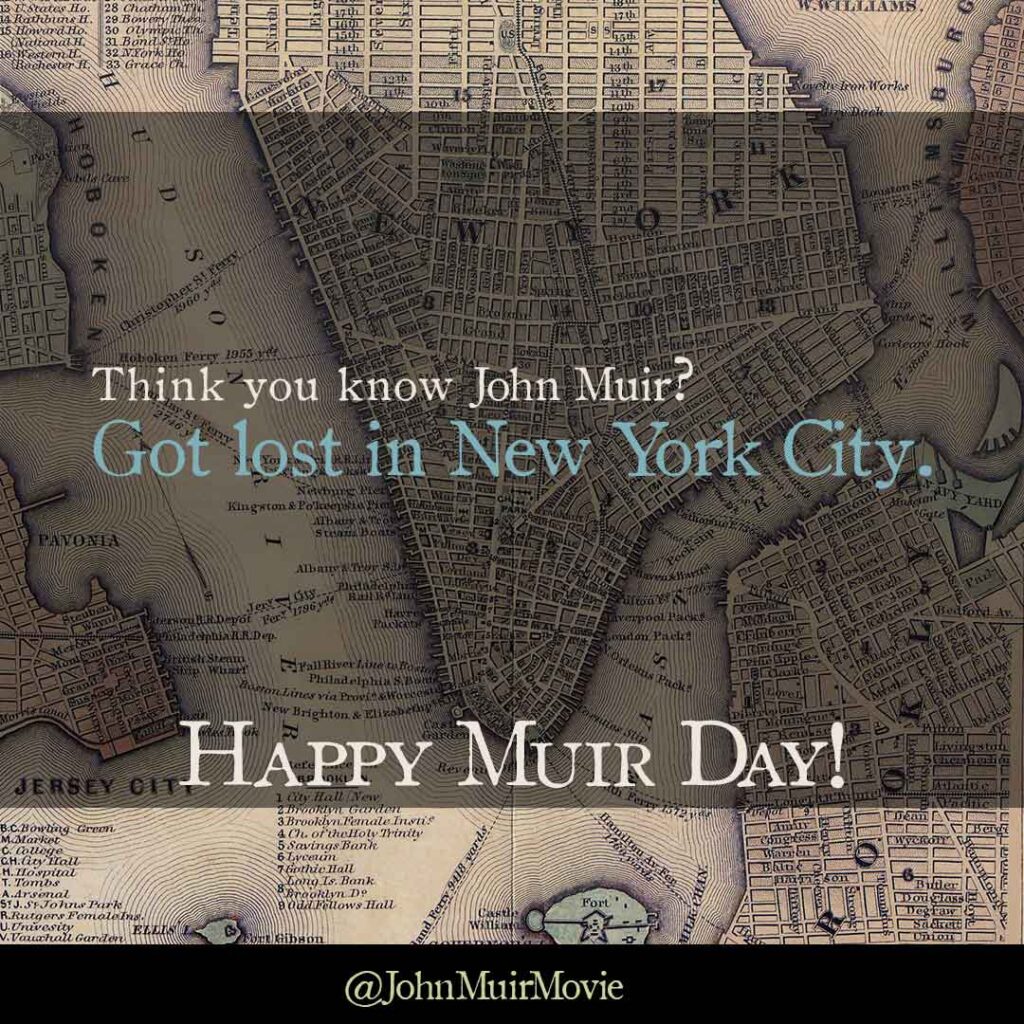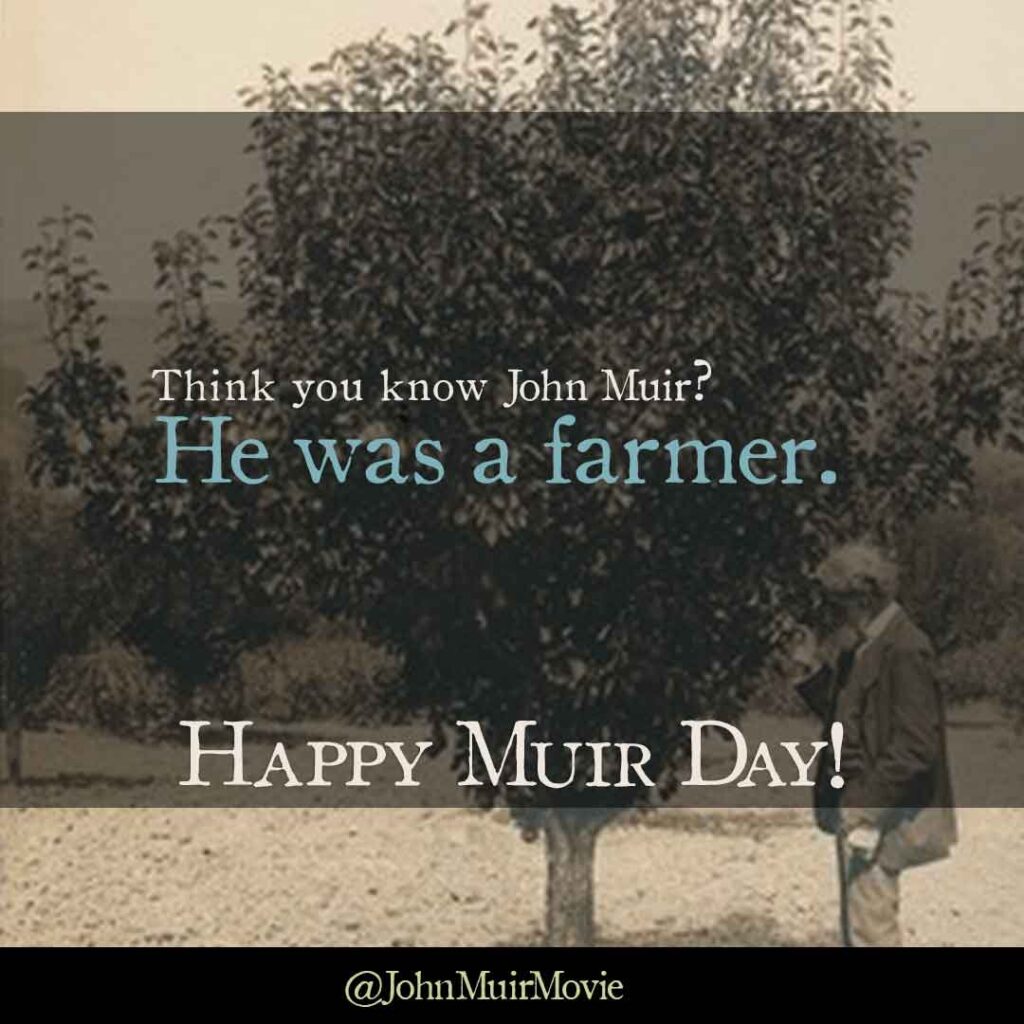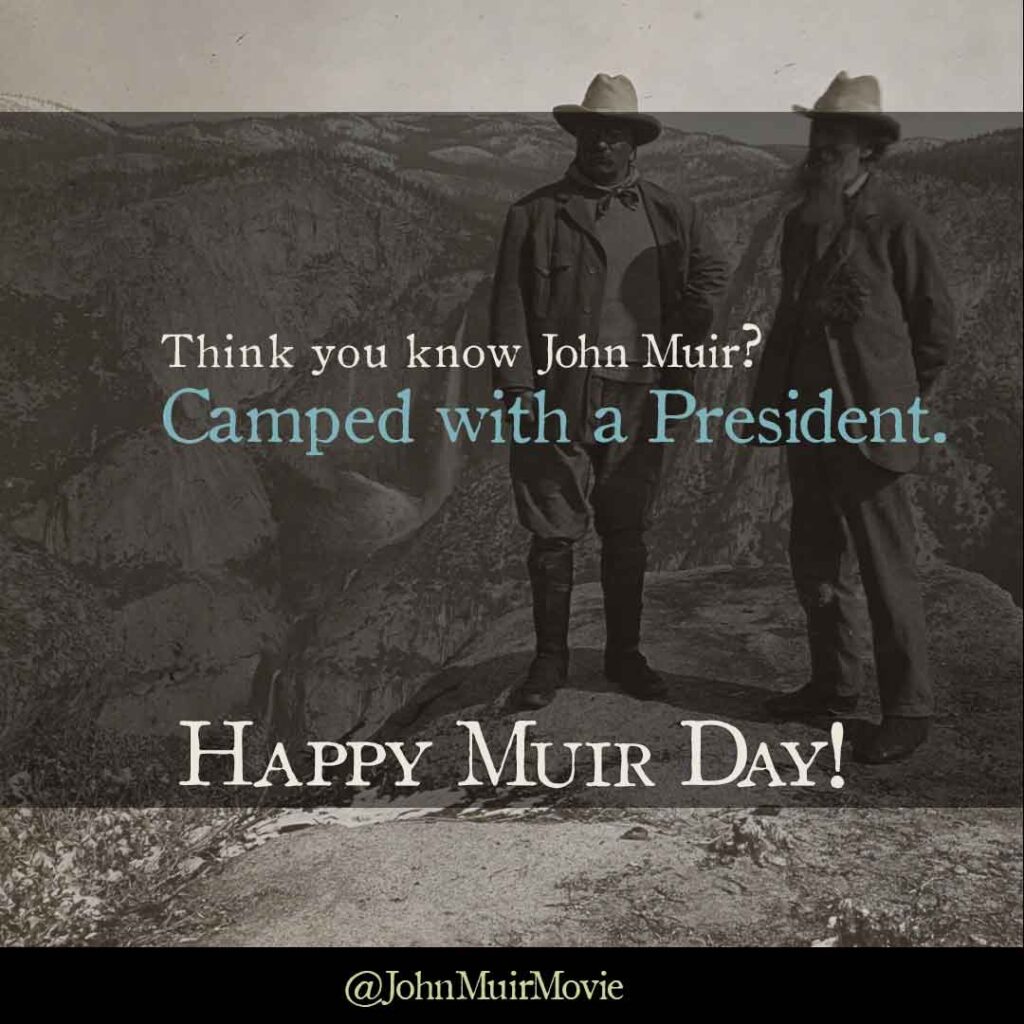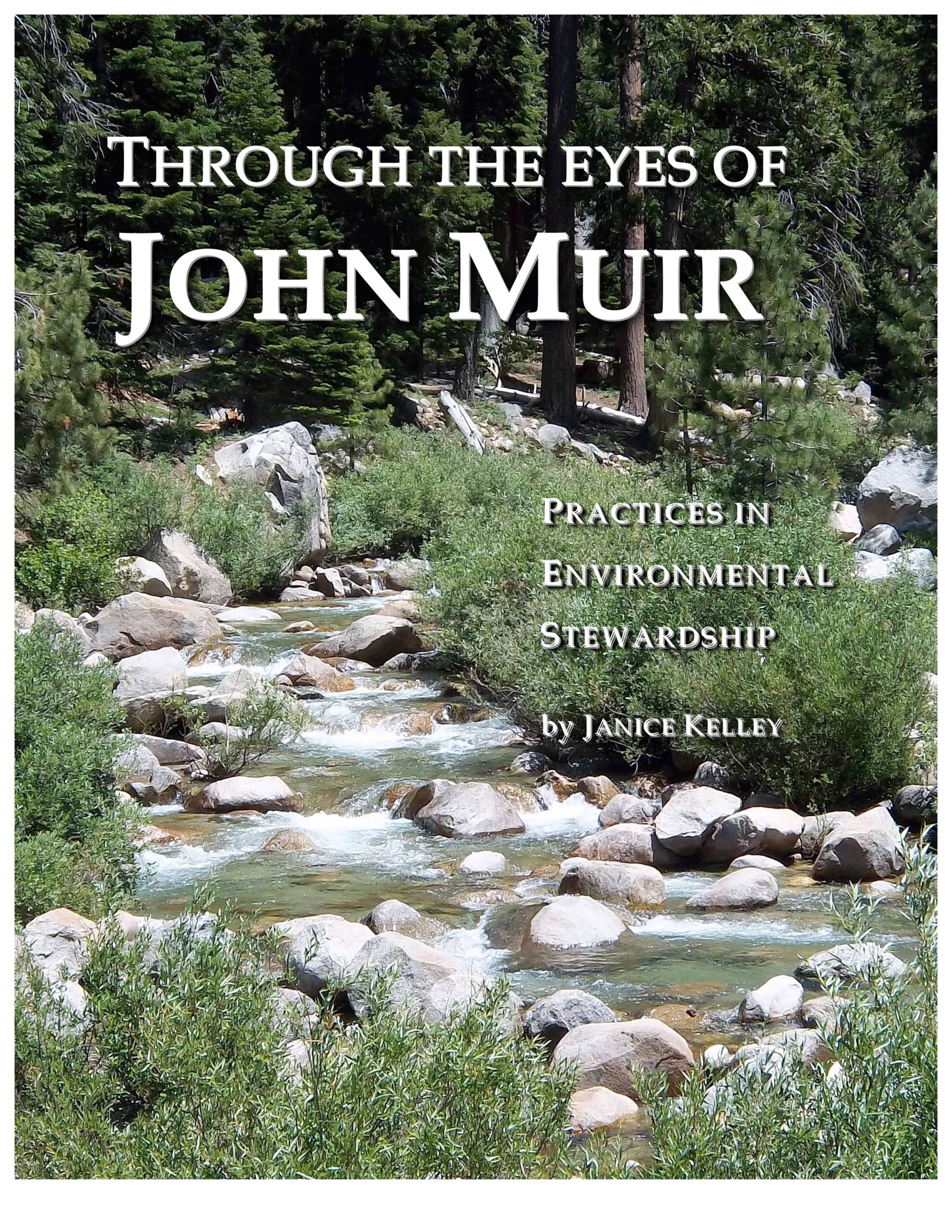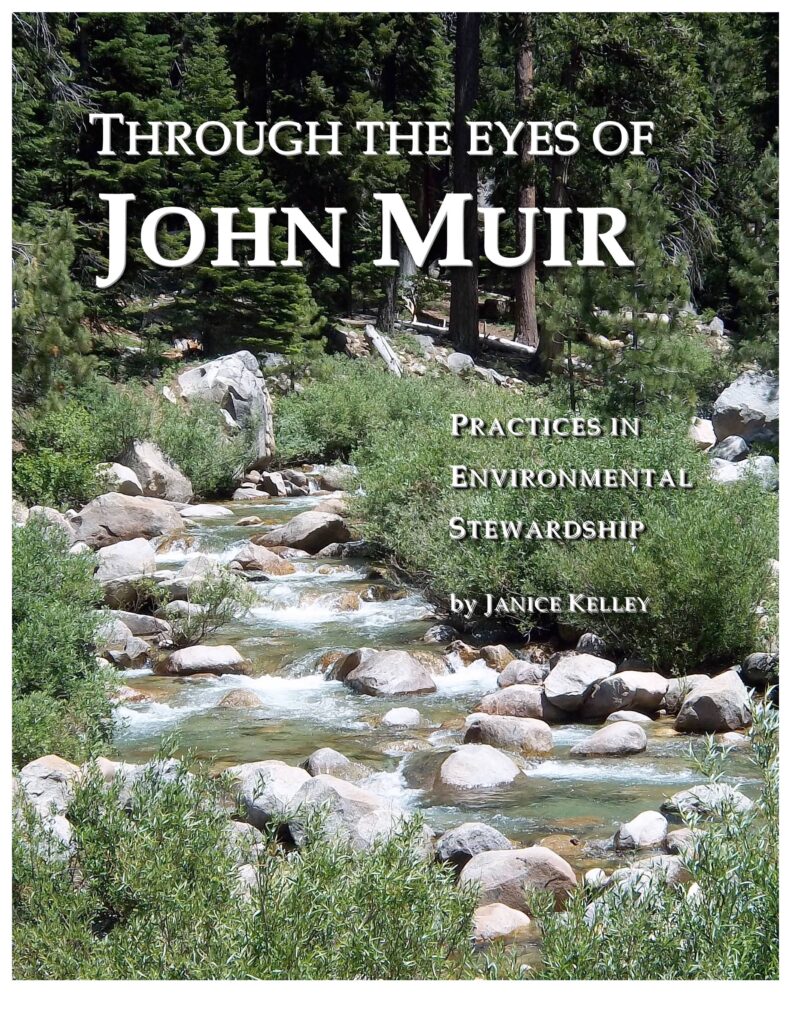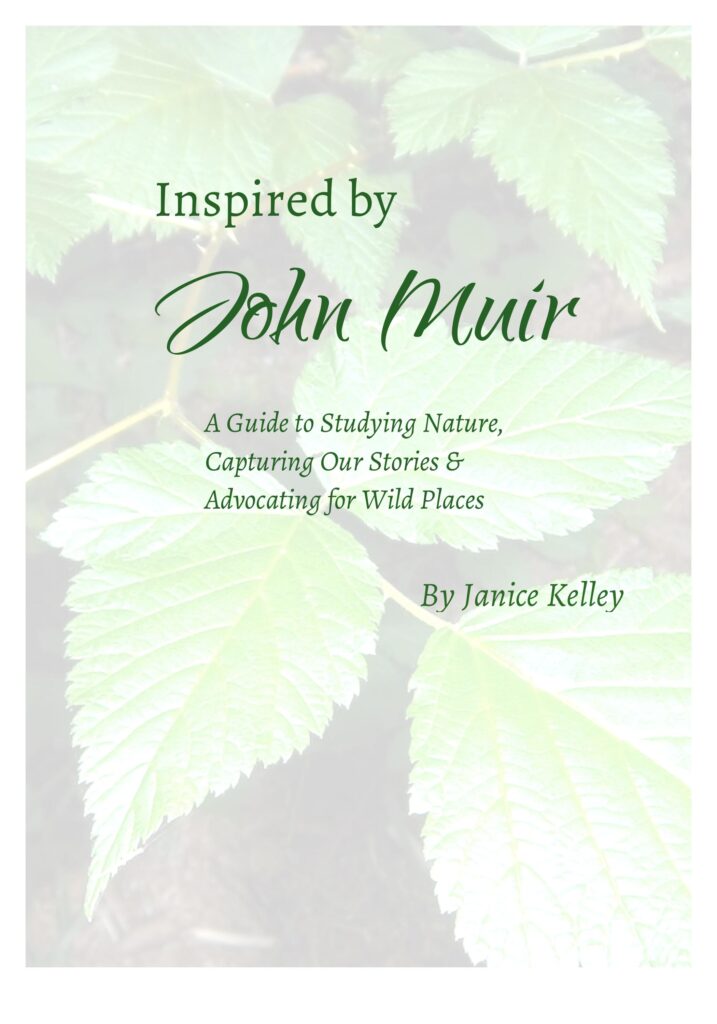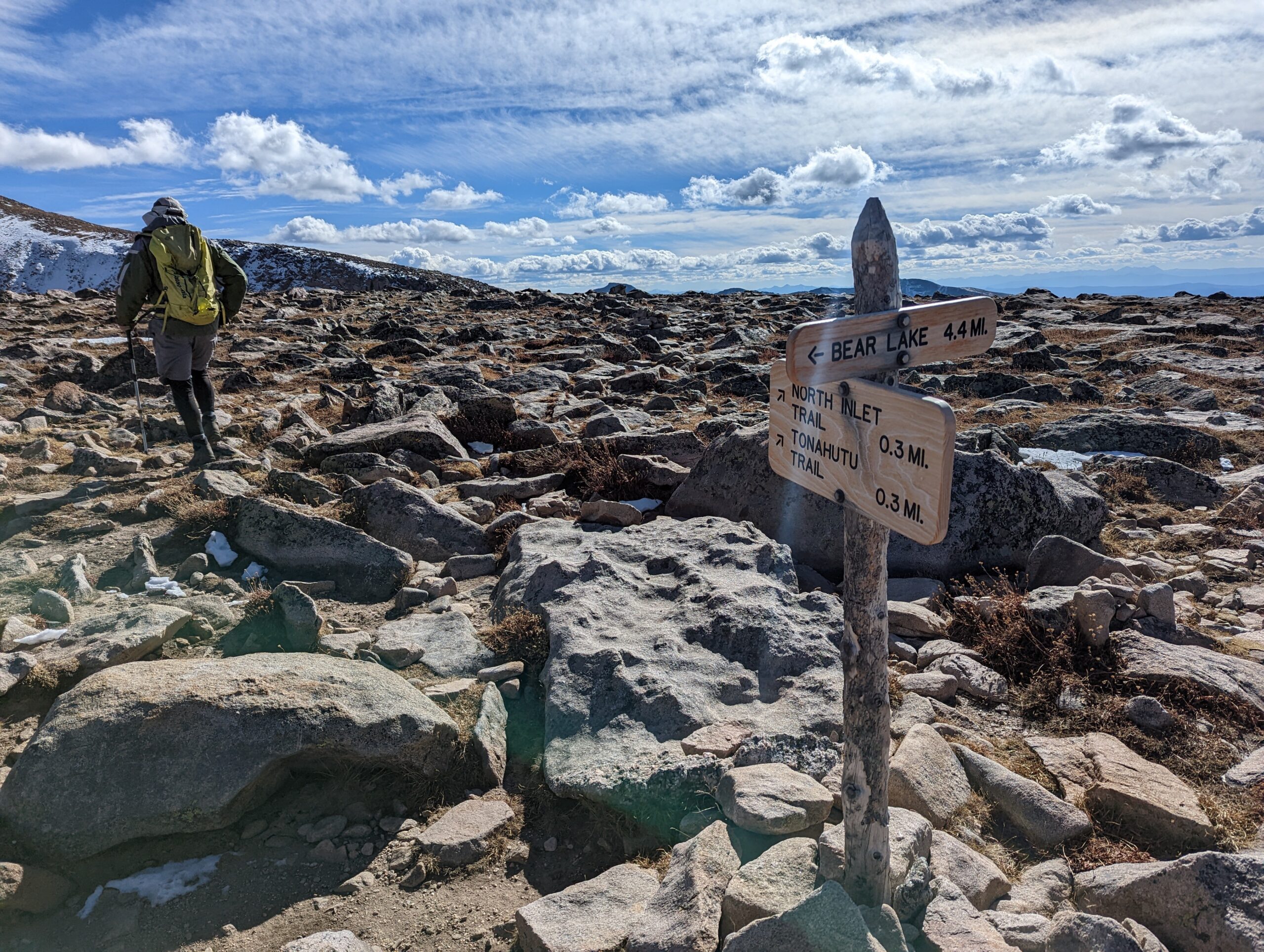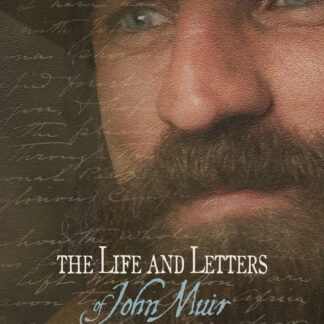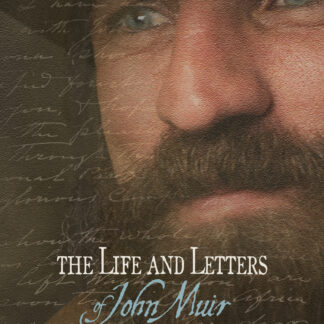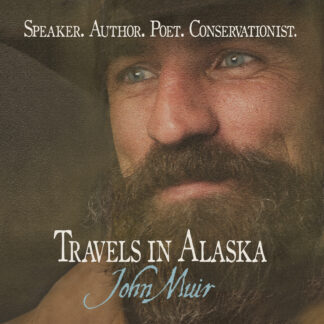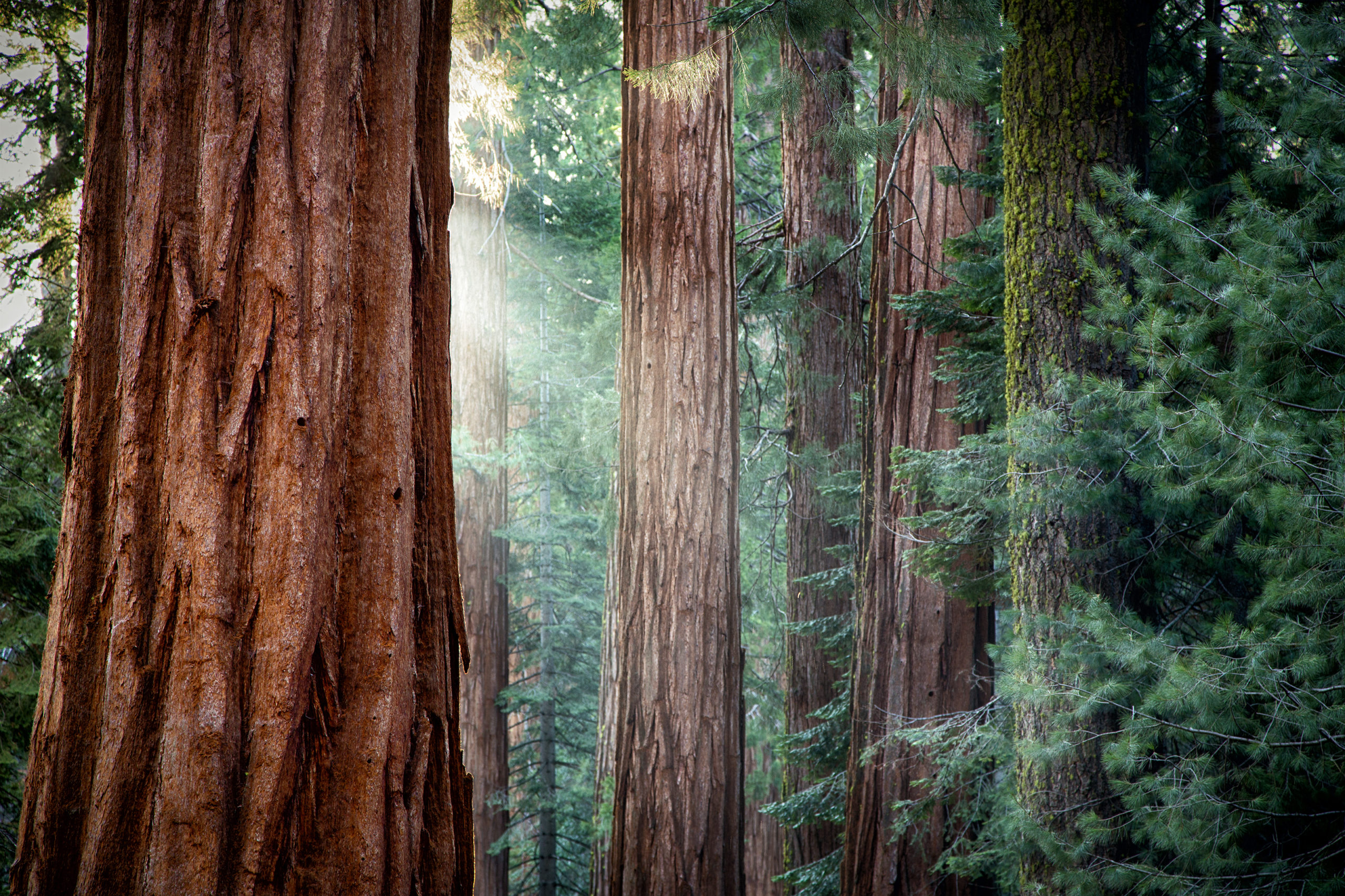
Celebrate John Muir’s Birthday on April 20 or any day to show your appreciation for his work for nature preservation.
He was a farmer. He was also a sheepherder as well as an orchardist with the family orchard in Martinez, California.
He camped with a President. Muir toured President Roosevelt on a 4-day trip through Yosemite. Roosevelt ditched his security detail and set out with Muir on the trip.
He was an inventor. With no technical training, John invented small machines. One such machine was a contraption to flip him out of bed every morning! He took his machine to the Madison State Fair. He attracted attention from the University of Wisconsin and got awarded a scholarship.
His roots were in Scotland. Muir was born on April 21, 1838, in Dunbar, Scotland and was one of eight children. He was active and adventurous and loved playing outside. Until he was 11, Muir attended the local schools of that small coastal town, according to the Sierra Club. But in 1849, the Muir family emigrated to the U.S., moving to Wisconsin.
He had two daughters. Wanda born March 25, 1881 and Helen born January 23, 1886. During his numerous travels he and his daughter Wanda wrote continuously to each other. Both of them went on long walks with him when older.
He was a terrible camper. Though fully acknowledging the wealth of information Muir had collected on the natural world, C. Hart Merriam thought very little of his camping skills, stating that “in spite of having spent a large part of his life in the wilderness, he knew less about camping than almost any man I have ever camped with.” In fact, Muir’s habit of not packing the proper gear almost cost him his life on several occasions.
He died on Christmas Eve. A draft of his book “Travels in Alaska” was open on his bed stand when he died on Christmas Day, 1914, a final testament to the transformation of a man who not only loved the wilderness with all his being, but discovered his own common humanity within a culture other than his own.
He got lost in New York City. Today, the John Muir Nature Trail is a 6.3-km out-and-back trail near New York City, New York.
His father was mean. Muir’s father, Daniel, was a religious zealot. He took his family to America because he wanted the freedom to preach the gospel as he understood it. As for John Muir, freedom was in short supply after he arrived.
An injury changed his life. Muir took odd jobs to support himself, including working at a carriage parts factory in Indianapolis. One day he stayed late to readjust a new belt. As he was unlacing the joining using a slender and sharp file, it slipped, flew and pierced his right eye. He was left temporarily blind. When he regained his sight, he was determined to devote the rest of his life to seeing nature.
Think you know John Muir?
Right click and save as to share any of the images below. Let us know by tagging @johnmuirmovie
Happy Muir Day!
